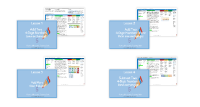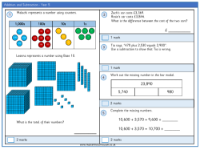Addition and Subtraction - Vocabulary

Maths Resource Description
Addition and subtraction are fundamental mathematical operations that Year 5 students explore to deepen their understanding of numbers. Addition involves combining two or more numbers to find their total sum, while subtraction is the process of determining the difference between numbers by reducing one number by another. The concept of 'equals' is crucial in both operations, signifying that two expressions or values are the same. For example, 5,358 plus 600 equals 5,958, and 21,345 minus 345 equals 21,000. These operations are not only about finding precise answers but also understanding the symbols and methods used to represent equality.
Within the curriculum, students learn about the role of zero as a place holder, which is essential for writing numbers correctly, such as in 2,104, where the zero indicates the absence of tens. The column method is introduced as an efficient way to organise numbers for addition and subtraction calculations. Estimation is another skill taught, allowing students to make reasonable guesses or find values close to the correct answer. The curriculum also covers multistep problems, where key vocabulary is underlined to help identify the operations and numbers involved. Students learn to be efficient in their methods, understand the concept of exchange, and recognise the sum as the total after adding numbers. Additionally, inverse operations are explained as the opposite or reversal of an operation, such as how the inverse of addition is subtraction and vice versa.


